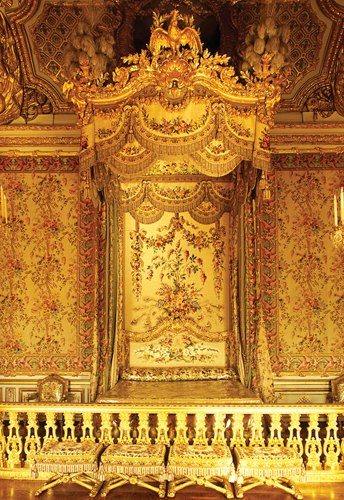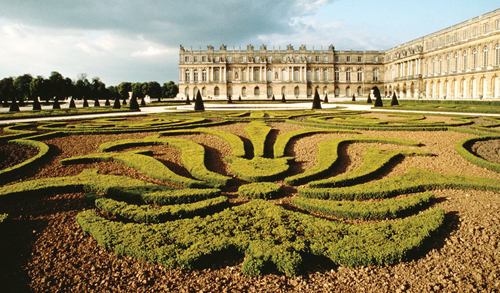A Taste of Greater Paris
Morning
You won’t cover Greater Paris in a day, and
Disneyland Resort Paris
and
Versailles
both need at least a day.
If you want variety, go to Montparnasse
by métro. In front of the busy mainline station, is the Tour
Montparnasse – take a trip to the top to admire the view and then enjoy a
coffee break in the Panoramic Bar.
When you leave, walk down boulevard Edgar Quinet. On your right is the entrance to the Cimetière du Montparnasse. An hour should be plenty of time here.
Walk towards the Vavin metro station to the historic café/brasserie
La Coupole
, to have lunch.
Afternoon
Take the metro at Vavin, changing at Réaumur-Sébastopol, to Cimetière du Père Lachaise
and explore the city’s other great cemetery. Spend one or two hours
searching out the famous names buried here and admiring the architecture
of
the monuments. Have a coffee afterwards at a
neighbourhood café, Le Saint Amour (
2 ave Gambetta
01 47 97 20 15Metro Père-Lachaise).
From Père-Lachaise it is again just one change on the metro, at Nation, to the Bois de Vincennes, where you can spend the late afternoon in the park
and admire the château.
Versailles Sights
The Hall of Mirrors
The
spectacular 70-m (233-ft) long Galerie des Glaces (Hall of Mirrors) has
been magnificently restored. It was in this room that the Treaty of
Versailles was signed in 1919, to formally end World War I.

Chapelle Royale
The
Royal Chapel is regarded as one of the finest Baroque buildings in the
country. Finished in 1710, the elegant, white marble Corinthian columns
and numerous murals make for an awe-inspiring place of prayer.
Salon de Venus
In
this elaborate room decorated mainly in marble, a statue of Louis XIV,
the creator of Versailles, stands centre stage, exuding regal splendour
beneath the fine painted ceiling.

Queen’s Bedroom
Nineteen
royal infants were born in this opulent room, which has been
meticulously restored to exactly how it appeared when it was last used
by Marie-Antoinette in 1789.

Marble Courtyard
Approaching
the front of the palace across the vast open forecourt, visitors
finally reach the splendour of the black-and-white marble courtyard,
which is the oldest section of the palace. The north and south wings
were added later.

Marble courtyard
L’Opéra
The opulent opera house was built in 1770 for the marriage of the dauphin,
the future Louis XVI, to Marie-Antoinette. The floors were designed so
that they could be raised to stage level during special festivals.
Le Trianon
In
the southeast corner of the gardens Louis XIV and Louis XV had the
Grand and Petit Trianon palaces built as “private” retreats.
Marie-Antoinette was given Petit Trianon by Louis XVI.
Palace Gardens
The
palace gardens feature many walkways, landscaped topiary, fountains,
pools, statues and the Orangery, where exotic plants were kept in the
winter. The magnificent Fountain of Neptune is situated to the north of
the North Wing.

Palace gardens

Salon d’Apollon
Louis
XIV’s throne room is, naturally, one of the palace’s centrepieces, and
features a suitably regal portrait of the great Sun King. Dedicated to
the god Apollo, it strikingly reflects the French monarchy’s divine
self-image.

Stables of the King
The magnificent stables have been restored and they now house the famous Zingaro equine training academy.
|
Not all sights are open at once, so check upon arrival.
|
|
Bois de Boulogne Features
Parc de Bagatelle
Differing
garden styles feature in this park, including English and Japanese,
though the major attraction is the huge rose garden, best seen in June.
Pré Catelan Park
This
park-within-a-park is at the very centre of the Bois. Its lawns and
wooded areas include a magnificent 200-year-old beech tree and the
idyllic, eponymous restaurant (see Le Pré Catelan).
Jardin d’Acclimatation
The
main children’s area of the Bois incorporates a small amusement park, a
zoo with a farm and a pets’ corner, and a Herb Museum aimed especially
at children Jardin d’Acclimatation.

Lakes
Two
long, thin lakes adjoin each other. The larger of the two, confusingly
called Lac Inférieur (the other is Lac Supérieur) has boats for hire and
a motor boat to take you to the islands.

Boating on lake
Musée en Herbe
This small museum aims to introduce children to art via regular, changing exhibitions. There is an admission charge.
Stade Roland Garros
The legendary home of French clay-court tennis hosts the glamorous French Open each year in June.
Château de Longchamp
At the same time as he redesigned central Paris , Baron Haussmann landscaped the Bois de Boulogne. This chateau was given to him as a thank-you from Napoleon III.
Shakespeare Garden
Inside
Pré Catelan park is a little garden planted with all the trees, flowers
and herbs mentioned in the plays of Shakespeare. There is a lovely
open-air theatre.

Shakespeare Garden
Jardin des Serres d’Auteuil
This
19th-century garden has a series of greenhouses where ornamental
hothouse plants are grown. In the centre is a palm house with tropical
plants.
Horse-Racing
The Bois is home to two race courses. To the west is the Hippodrome de Longchamp, where flat racing takes place including the Prix de l’Arc de Triomphe; in the east, the Hippodrome d’Auteuil holds steeplechases.